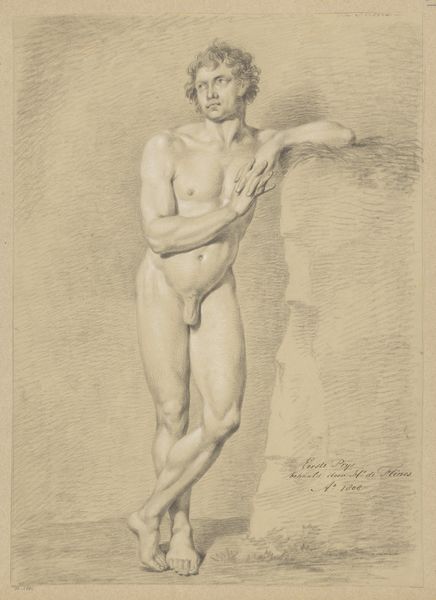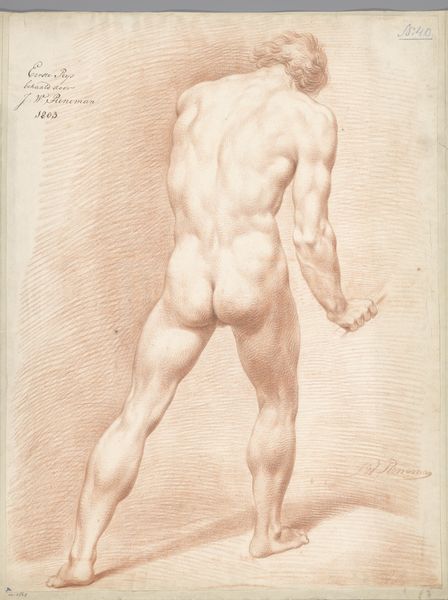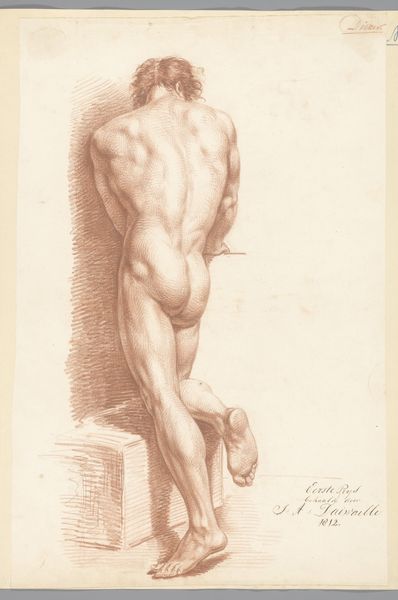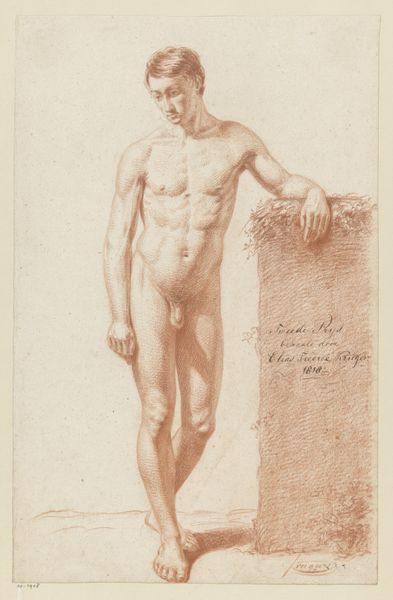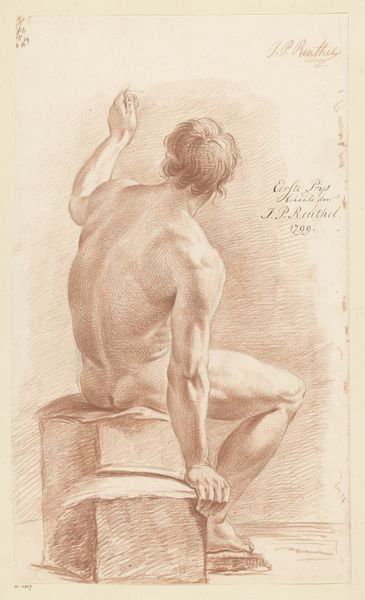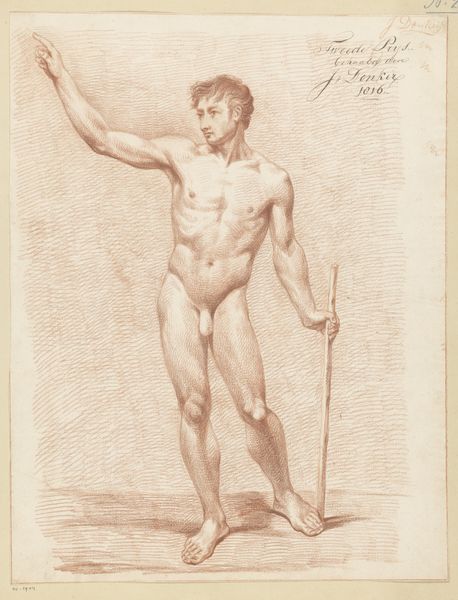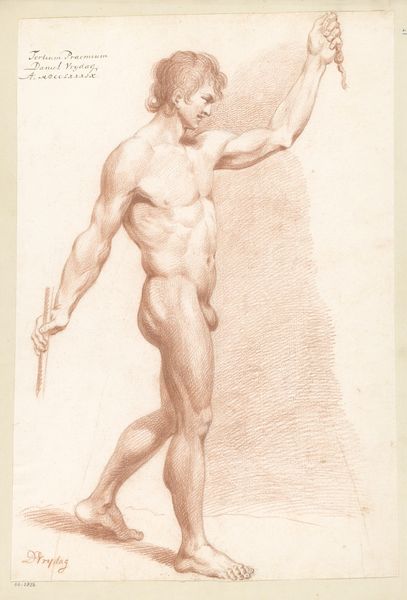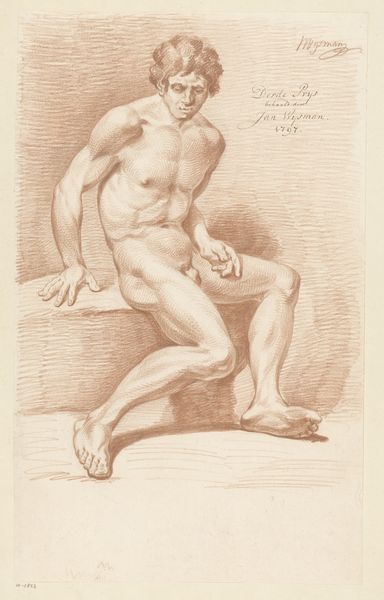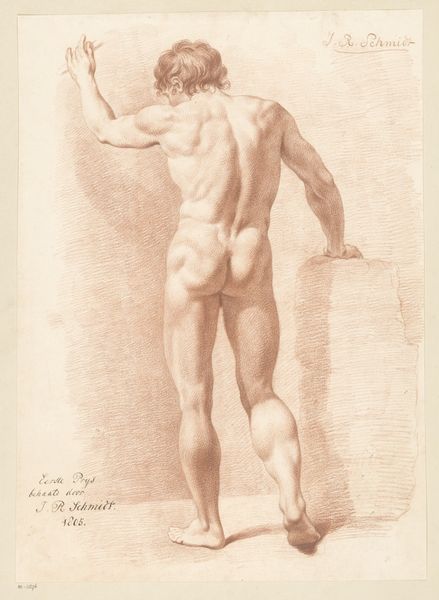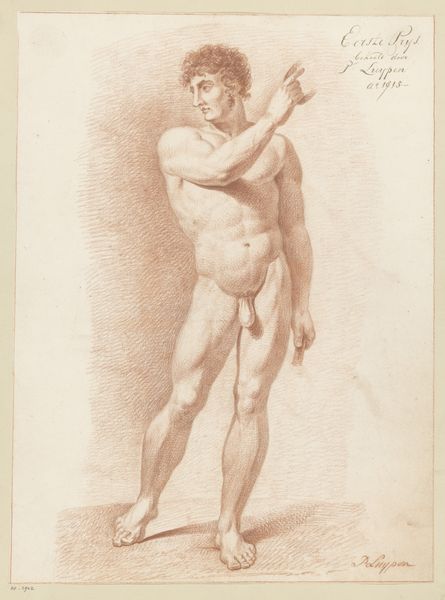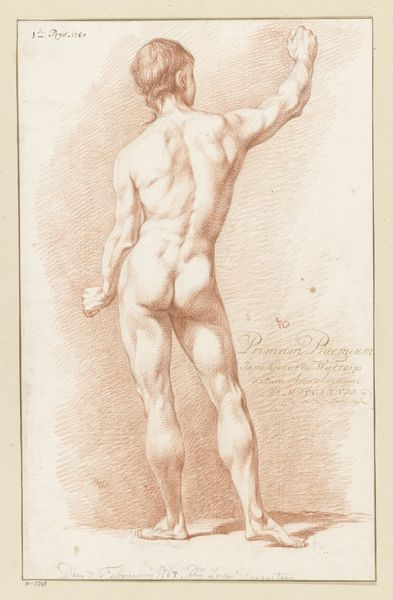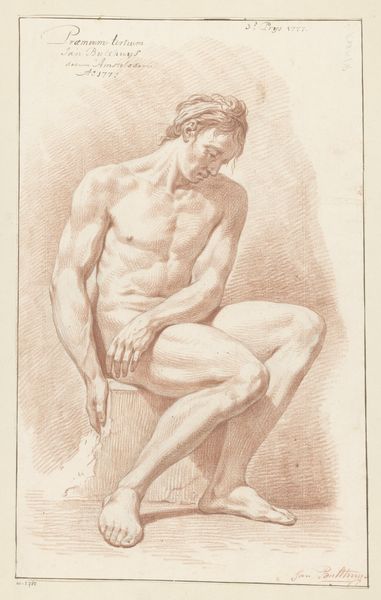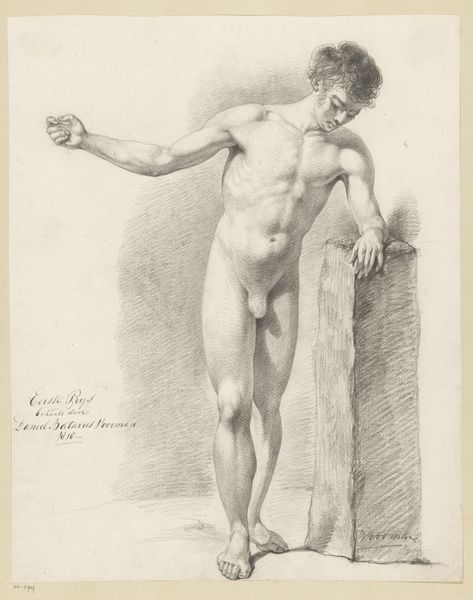
drawing, pencil
#
pencil drawn
#
drawing
#
pencil sketch
#
classical-realism
#
charcoal drawing
#
figuration
#
pencil drawing
#
pencil
#
portrait drawing
#
history-painting
#
academic-art
#
nude
Dimensions: height 535 mm, width 419 mm
Copyright: Rijks Museum: Open Domain
This red chalk drawing of a standing male nude, seen from the back, was made by Douwe de Hoop in 1819. The figure's clasped hands behind his back present a fascinating study in contrapposto, a classical pose evoking both restraint and latent power. This motif of hands clasped behind the back is not unique to de Hoop; we see echoes of it in depictions of bound captives throughout history, from ancient Roman reliefs to Renaissance depictions of Christ. The gesture speaks to a deep-seated human fascination with control, vulnerability, and the tension between inner strength and outward confinement. Consider the emotional weight this conveys: a deliberate obscuring of the hands, the tools of creation and agency, suggesting a suppression of action. It's a posture of introspection, perhaps even resignation. Such a symbol resurfaces and evolves, echoing through time. It engages us on a subconscious level, reminding us of our own complex relationship with freedom and constraint.
Comments
No comments
Be the first to comment and join the conversation on the ultimate creative platform.
